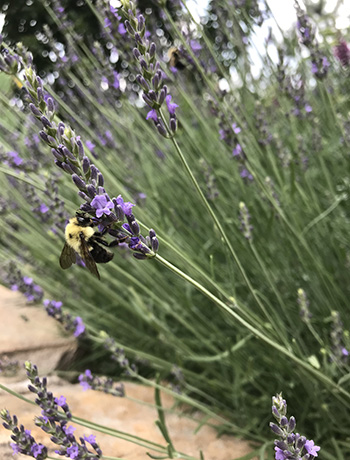Garden Talk

Horticultural Highlight: Lavender ‘Phenomenal’

In this series, the staff of Duke Gardens highlights plants you’ll find within our 55-acre living collection. This week horticulturist Lindsey Luks features a hardy form of lavender that's perfect for the perennial border and herb garden alike.
Botanical name: Lavandula x intermedia Phenomenal™ 'Niko' PP24193
Common name: English Lavender
Family name: Lamiaceae (Mint Family)
Plant type: Perennial Herb
Location in Duke Gardens: Charlotte Brody Discovery Garden & the Mary Duke Biddle Rose Garden
USDA Hardiness Zones: 4-9

If you’re like me, you’ve planted lavender, had it thrive, patted yourself on the back, and then suddenly without warning BAM, it’s dead. Because of its Mediterranean origins, lavender has a hard time growing in our southern climate. In the summer it’s too hot and humid, and in the winter it’s too wet and cold, which causes the roots of many Mediterranean plants to rot. There have been many years of breeding attempts to create a lavender that can tolerate these conditions, and it has finally paid off. Just as the name suggests, lavender ‘Phenomenal’ truly is extraordinary. It has beautiful silver evergreen foliage that stands tall all winter long. The airy texture is a welcome addition to the herb garden and perennial border alike. And as a triple bonus it’s deer resistant and drought tolerant.
In late spring you will be rewarded with the characteristic tall, buoyant purple blooms, which beckon pollinators for a feast of sweet nectar. But pollinators aren’t the only ones who enjoy these delicious flowers. They are commonly used to flavor both sweet and savory culinary dishes, and they are also cut and dried for potpourri or for a calming addition to a bath.
As a good rule of thumb, plant lavender in a well-draining soil. You can even add in a little gravel or grit to achieve better drainage, which is important here in the Piedmont of N.C. The flowers will persist longer if the plants don’t dry out too much during their bloom time, so they might need a watering here and there, depending on the weather. Expect a 3-by-3-foot plant by the third year!
Reference: https://www.waltersgardens.com/variety.php?ID=LAVPH
Photos by Lindsey Luks. Portrait by Clarence Burke.





